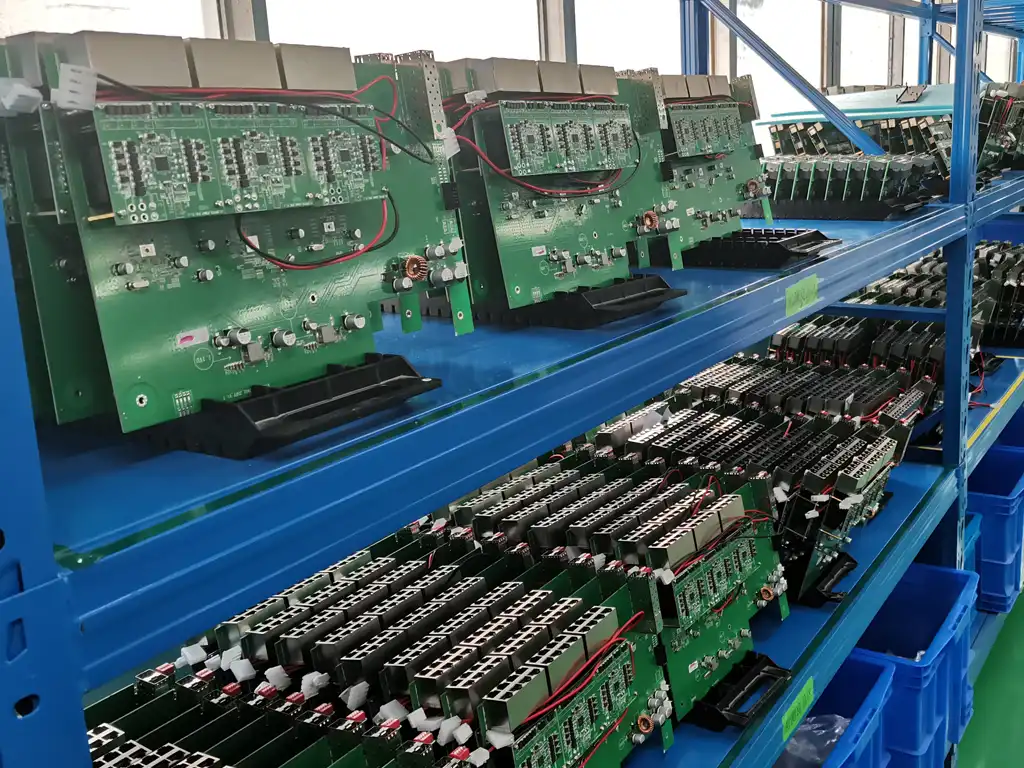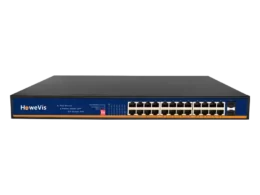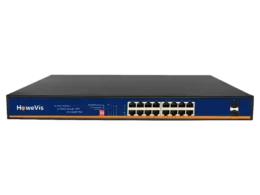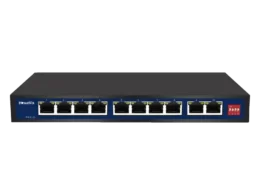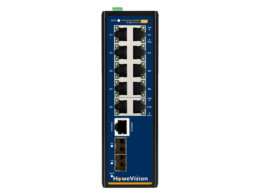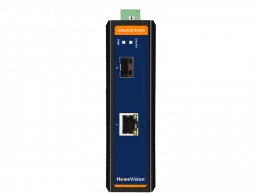Did you know that 90% of network performance issues can be traced back to the choice of switches? Switches play a crucial role in connecting devices within a network, and understanding the differences between managed and unmanaged switches is essential for optimizing network performance.
Managed switches offer advanced configuration options, allowing network administrators to have greater control over their networks. On the other hand, unmanaged switches are plug and play devices that require no configuration and are ideal for simple setups. Both types of switches have their advantages and use cases, but it’s important to choose the right one based on your specific needs.
We’ll discuss their features, benefits, and use cases to help you make an informed decision.
Key Differences between Managed and Unmanaged Switches
Managed and unmanaged switches have some key differences that can impact your network’s performance and management capabilities. Let’s dive into the distinctions between these two types of switches.
Managed switches provide advanced features like VLANs, QoS, and SNMP, while unmanaged switches lack these capabilities.
Managed switches offer a range of management features that allow for greater control over your network. With VLAN support, you can segment your network into virtual LANs to improve security and efficiency. Quality of Service (QoS) ensures that critical applications receive priority bandwidth, optimizing performance for voice or video streaming. Simple Network Management Protocol (SNMP) enables remote monitoring and configuration of the switch.
On the other hand, unmanaged switches are more basic in functionality. They operate out of the box with no need for configuration or management. While this simplicity may be suitable for small networks with minimal traffic requirements, it limits your ability to customize or optimize the network.
Managed switches allow for remote management and monitoring, whereas unmanaged switches do not.
One significant advantage of managed switches is their ability to be remotely managed. This means you can access and configure the switch from anywhere on the network using a web interface or command-line interface (CLI). Remote management simplifies troubleshooting, allows for firmware updates without physical access to the switch, and provides real-time visibility into network performance.
In contrast, unmanaged switches lack remote management capabilities. Any changes or configurations must be made directly on-site at the switch itself. This limitation can be inconvenient if you have multiple locations or if your IT team needs to manage the network remotely.
The cost of managed switches is generally higher than that of unmanaged switches due to their added functionality.
Managed switches are typically more expensive than their unmanaged counterparts. The additional features and capabilities provided by managed switches contribute to their higher cost. However, it’s important to consider the long-term benefits and potential cost savings that come with the enhanced management capabilities. If your network requires advanced features or remote management, investing in a managed switch may be worth the extra expense.
On the other hand, unmanaged switches are more affordable and straightforward. They are often used in small networks or home setups where simplicity and cost-effectiveness are prioritized over advanced functionality.
Network complexity can influence the decision to choose either a managed or an unmanaged switch.
The complexity of your network plays a significant role in determining whether you should opt for a managed or unmanaged switch. If you have a large network with multiple VLANs, require QoS for specific applications, or need to monitor and manage your network remotely, a managed switch is likely the better choice. It provides the flexibility and control necessary to handle complex networking requirements effectively.
However, if you have a simple network setup with few devices and no need for advanced features or remote management, an unmanaged switch may suffice. It offers plug-and-play functionality without any configuration hassles.
Benefits of Managed Network Switches
Managed network switches offer a range of benefits that can greatly enhance the performance and security of your network. Let’s take a closer look at some of these advantages:
Enhanced Security Features
Managed switches come equipped with advanced security features, such as access control lists (ACLs), which provide an extra layer of protection for your sensitive data. ACLs allow you to control and restrict access to specific ports or devices on the network, ensuring that only authorized users can gain entry. This helps prevent unauthorized access and potential security breaches.
Quality of Service (QoS) Support
One major advantage of managed switches is their ability to prioritize critical traffic through Quality of Service (QoS) support. With QoS, you can assign different levels of priority to various types of network traffic, ensuring that important applications receive the necessary bandwidth and resources for optimal performance. For example, if you have a video conference running simultaneously with other internet activities, QoS allows you to allocate more bandwidth to the video conference, preventing lag or interruptions.
Remote Management Capabilities
Managed switches offer the convenience of remote management capabilities, allowing you to troubleshoot issues and make configuration changes without physically accessing the switch location. This saves time and effort by enabling efficient management from a central location. Whether you need to adjust settings or diagnose connectivity problems, remote management provides flexibility and ease of use.
Scalability Options
Another significant benefit of managed switches is their scalability options. These switches are designed with expansion in mind, making it easier to grow your network as needed. You can add more ports or stack multiple managed switches together for increased capacity and improved performance. Whether your network requires additional connections for new devices or demands higher bandwidth for increased data flow, managed switches offer flexibility in scaling up.
Advantages of Unmanaged Network Switches
Unmanaged switches offer several advantages, making them a popular choice for small networks or home environments where advanced features are not necessary. Let’s explore the benefits of using unmanaged network switches.
Easy Setup and Configuration
One of the major advantages of unmanaged switches is their simplicity in setup and configuration. These switches are designed to be plug-and-play devices, meaning they can be easily connected to your network without requiring any technical knowledge or configuration skills. This makes them ideal for non-tech-savvy users who need a simple networking solution without the hassle of complex setups.
Cost-Effective Solution
Unmanaged switches provide a cost-effective solution for small networks or home environments. Since they lack advanced features found in managed counterparts, unmanaged switches are generally more affordable. If you have a limited budget or don’t require extensive control over your network, opting for an unmanaged switch can save you money while still providing reliable network connectivity.
Plug-and-Play Functionality
The plug-and-play functionality of unmanaged switches makes them incredibly convenient to use. Once connected to your network, these switches automatically detect and configure themselves without any user intervention. This feature eliminates the need for manual configurations or adjustments, making it easier for users who prefer a hands-off approach to networking.
Lower Power Consumption
Compared to managed switches, unmanaged switches typically consume less power. This lower power consumption can save energy over time, reducing both your environmental impact and electricity costs. If you’re conscious about energy efficiency and want to minimize your carbon footprint, choosing an unmanaged switch can be a step in the right direction.
Suitable for Non-Tech-Savvy Users
Unmanaged switches are designed with simplicity in mind, making them suitable for non-tech-savvy users who just need basic network connectivity. With no complicated settings or configurations to worry about, anyone can easily set up and use an unmanaged switch without the need for extensive technical knowledge. This user-friendly approach ensures that even those with limited networking experience can get their network up and running quickly.
Factors to Consider When Choosing Between Managed and Unmanaged Switches
Flexibility:
Managed switches offer greater flexibility compared to unmanaged switches. With managed switches, you have more control over your network and can customize settings according to your specific needs. You can prioritize certain types of traffic, set up VLANs (Virtual Local Area Networks), and even monitor network performance. On the other hand, unmanaged switches are plug-and-play devices that require no configuration. They are simple to use but lack the advanced features and customization options offered by managed switches.
Scalability:
If scalability is a concern for your network, then managed switches are the way to go. These switches allow you to expand your network easily by adding more ports or connecting multiple switches together. They provide better support for larger networks with numerous users and devices. Unmanaged switches, on the other hand, have limited port availability and cannot be expanded beyond their initial configuration.
Network Security:
Managed switches have the upper hand. They offer advanced security features such as access control lists (ACLs), which allow you to control who has access to your network resources. Managed switches also support features like port mirroring, which helps in monitoring network traffic for suspicious activity or troubleshooting purposes. Unmanaged switches lack these security features, making them more vulnerable to unauthorized access and potential security breaches.
Cost:
Cost is an important factor when choosing between managed and unmanaged switches. Unmanaged switches are generally less expensive than their managed counterparts since they lack advanced features and configuration options. If you have a small-scale network with basic requirements, an unmanaged switch might be sufficient and cost-effective for your needs. However, if you require advanced functionality or have a larger network that requires scalability and enhanced security measures, investing in a managed switch would be worth considering.
Technical Expertise:
Consider the level of technical expertise available within your organization before deciding between managed and unmanaged switches. Managed switches require more technical knowledge to configure and maintain. You need to have a good understanding of networking concepts and protocols to make the most of their advanced features. Unmanaged switches, on the other hand, are designed for ease of use and do not require any configuration or technical expertise.
Understanding Industrial Ethernet Switch Characteristics
Industrial Ethernet switches are a vital component in building robust and reliable network infrastructures for industrial environments. These switches are edesigned to withstand the harsh conditions often found in industrial settings, including extreme temperatures, vibrations, and electromagnetic interference.
Harsh Environment Resilience
One of the key characteristics of industrial Ethernet switches is their ability to operate in challenging conditions. Unlike regular switches that are designed for office or home use, industrial switches have ruggedized casings and components that can withstand extreme temperatures ranging from -40°C to 75°C (-40°F to 167°F). This makes them suitable for deployment in outdoor locations or areas with no climate control.
Industrial Ethernet switches are built to handle high levels of vibration and shock. They feature reinforced connectors and mounting options that ensure stability even in environments with heavy machinery or constant movement. This resilience helps prevent network disruptions caused by physical stressors.
High Availability through Redundancy Features
Industrial networks require high availability to minimize downtime and maintain continuous operations. To achieve this, industrial Ethernet switches incorporate redundancy features such as Rapid Spanning Tree Protocol (RSTP). RSTP allows for rapid convergence of the network in case of link failures by quickly rerouting traffic through alternate paths. This ensures uninterrupted connectivity between devices even when one or more links fail.
Moreover, these switches often support redundant power inputs with automatic switchover capabilities. In the event of a power outage or failure on one power source, the switch seamlessly transitions to an alternative power source without interrupting network operation. This redundancy feature further enhances network reliability and minimizes potential downtime.
Layer 3 Capabilities for Efficient Routing
In complex industrial networks where multiple subnets or VLANs need to communicate with each other, layer 3 capabilities become crucial. Industrial Ethernet switches equipped with layer 3 routing functionality enable efficient routing between different subnets or VLANs within the network infrastructure. This allows for better traffic management, improved security through segmentation, and optimized performance by reducing broadcast traffic.
Power over Ethernet (PoE) Support
Power over Ethernet (PoE) is a technology that enables the simultaneous transmission of data and power to connected devices over a single Ethernet cable. Many industrial Ethernet switches provide PoE support, allowing for easy deployment of network devices such as IP cameras, wireless access points, and VoIP phones without the need for separate power cables or outlets. This simplifies installation and reduces overall infrastructure costs.
Industrial PoE switches come in various port configurations to suit different requirements. From compact 8-port PoE switches for small-scale deployments to high-density 24-port PoE switches for larger networks, there are options available to accommodate diverse industrial needs.
Common Applications for Managed and Unmanaged Switches
Managed switches and unmanaged switches have different applications depending on the specific needs of a network. Let’s explore some common scenarios where each type of switch is commonly used.
Managed switches in enterprise networks, data centers, and large-scale deployments
Managed switches are often the go-to choice for enterprise networks, data centers, and large-scale deployments that require advanced management features. These switches offer greater control and customization options, allowing network administrators to configure settings such as VLANs (Virtual Local Area Networks), QoS (Quality of Service), and port mirroring. With these capabilities, managed switches provide enhanced security, better traffic management, and improved performance optimization.
In enterprise environments with multiple departments or different security requirements, managed switches enable the creation of separate VLANs to isolate traffic between groups. This segregation helps prevent unauthorized access to sensitive information or resources. Managed switches allow for the monitoring of network traffic using features like port mirroring. This capability assists in troubleshooting issues by capturing packets from one port and forwarding them to another for analysis.
Unmanaged switches in small offices, home networks, and simplicity-oriented environments
On the other hand, unmanaged switches find their applications in small offices, home networks, or environments where simplicity is prioritized over customization. These plug-and-play devices require no configuration or management interface setup. They are designed to be straightforward and easy to use right out of the box.
Unmanaged switches are ideal for scenarios where there is a need to connect multiple devices without any complex networking requirements. For instance, in a small office setting with a few computers and printers connected via Ethernet cables, an unmanaged switch can provide the necessary connectivity without any additional configuration steps.
Utilization in IP surveillance systems
Both managed and unmanaged switches can be utilized in IP surveillance systems where cameras need to be connected to a central recording device or Network Video Recorder (NVR). These switches provide Power over Ethernet (PoE) capabilities, eliminating the need for separate power cables for each camera. This simplifies installation and reduces cable clutter.
In an IP surveillance setup, managed switches offer additional benefits such as VLAN support and Quality of Service (QoS) settings. VLANs can be used to segregate camera traffic from other network traffic, ensuring optimal performance and security. QoS settings prioritize video data packets, minimizing latency and ensuring smooth video streaming without interruptions.
Industrial sectors relying on managed switches
Managed switches also find extensive use in industrial sectors such as manufacturing plants. These environments often require ruggedized equipment that can withstand harsh conditions and provide specialized functionalities. Managed switches designed for industrial applications offer features like redundant power inputs, wide temperature ranges, and protection against electromagnetic interference (EMI).
In manufacturing plants, managed switches play a crucial role in connecting various devices such as Programmable Logic Controllers (PLCs), Human-Machine Interfaces (HMIs), sensors, and actuators. They facilitate real-time communication between these devices while providing the necessary reliability and resilience required in industrial automation systems.
Making the Right Choice for Your Network
Now that we have explored the key differences between managed and unmanaged switches, as well as their respective benefits and advantages, it’s time to make an informed decision for your network. Remember, choosing the right switch is crucial for ensuring optimal performance and security.
To make the best choice, consider your specific requirements and budget. If you need advanced control over your network traffic and enhanced security features, a managed switch would be ideal. On the other hand, if simplicity and cost-effectiveness are your priorities, an unmanaged switch might be more suitable.
Don’t rush into a decision without carefully evaluating your needs. Take into account factors such as scalability, network size, future expansion plans, and the level of technical expertise available to manage the switch. By doing so, you can ensure that your network operates smoothly and efficiently.
Unmanaged PoE switch list
- 5 port Gigabit Unmanaged PoE Switches
- 8 port Gigabit Unmanaged PoE Switches
- 16 port Gigabit Unmanaged PoE Switches
- 24 port Gigabit Unmanaged PoE Switches
- 48 port Gigabit Unmanaged PoE Switches
FAQs
What is Power over Ethernet (PoE)?
Power over Ethernet (PoE) is a technology that allows both power and data to be transmitted through Ethernet cables simultaneously. This eliminates the need for separate power cables for devices such as IP cameras, wireless access points, or VoIP phones. PoE simplifies installation by providing power directly from the network switch.
Can I mix managed and unmanaged switches in my network?
Yes, it is possible to mix managed and unmanaged switches within a network. However, keep in mind that each type has its own capabilities and limitations. Managed switches offer advanced features like VLANs or Quality of Service (QoS), while unmanaged switches are simpler but lack these functionalities.
How do I know if my devices require PoE?
To determine if your devices require PoE support, check their specifications or consult with the manufacturer’s documentation. Devices such as IP cameras or wireless access points often mention PoE compatibility in their product descriptions.
Do all managed switches support PoE?
No, not all managed switches support PoE. If you require PoE functionality, make sure to choose a managed switch that specifically states PoE support in its specifications.
What is the difference between Layer 2 and Layer 3 switches?
Layer 2 switches operate at the Data Link layer of the OSI model and can only forward data based on MAC addresses. Layer 3 switches, however, operate at the Network layer and can perform routing functions by examining IP addresses. Layer 3 switches are more advanced and capable of handling larger networks with multiple subnets.

